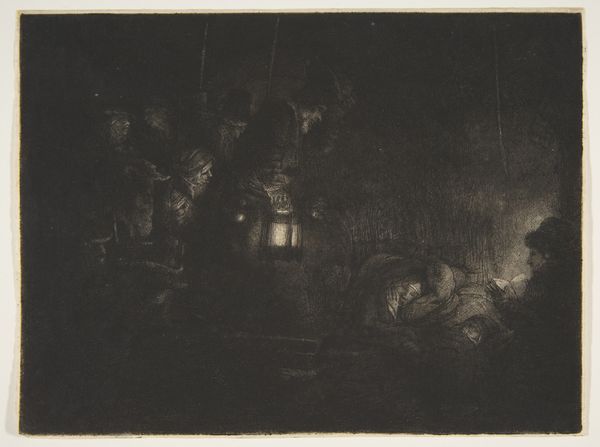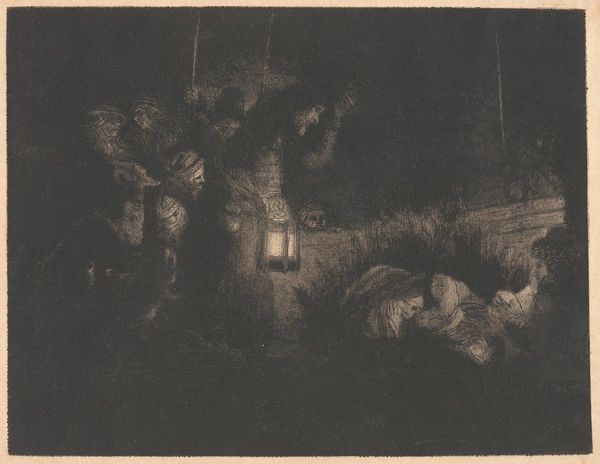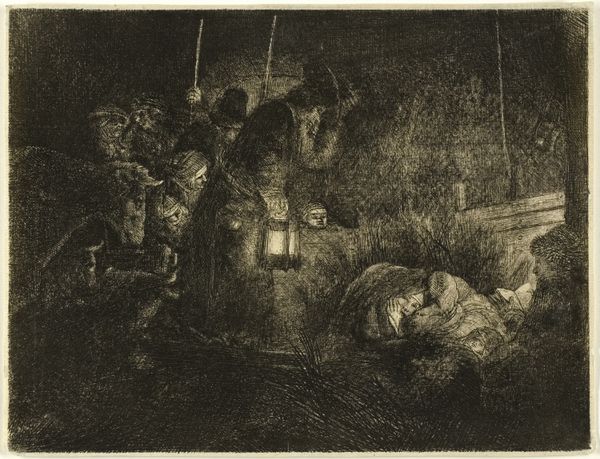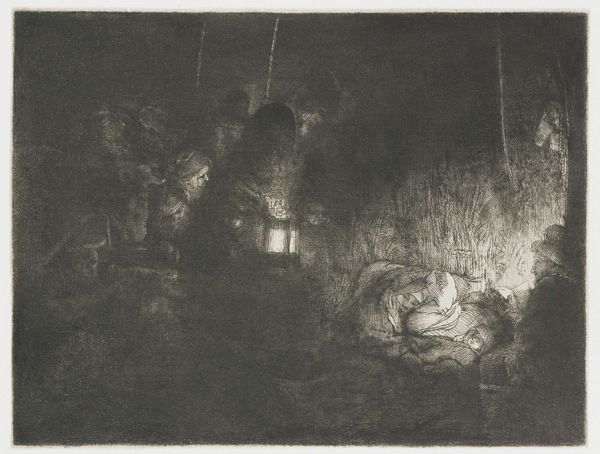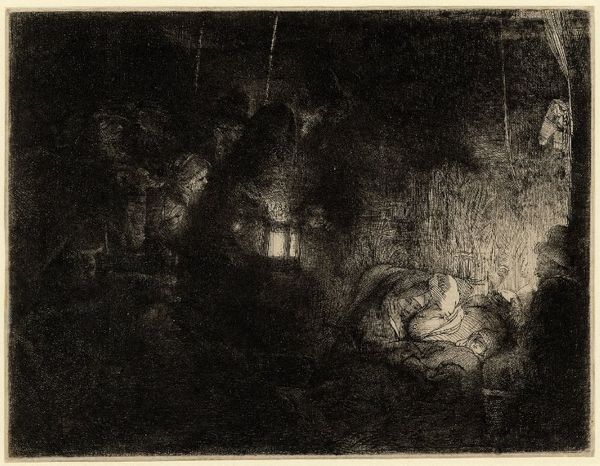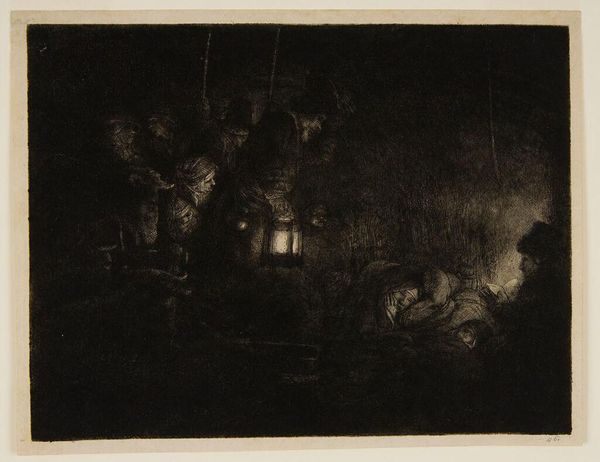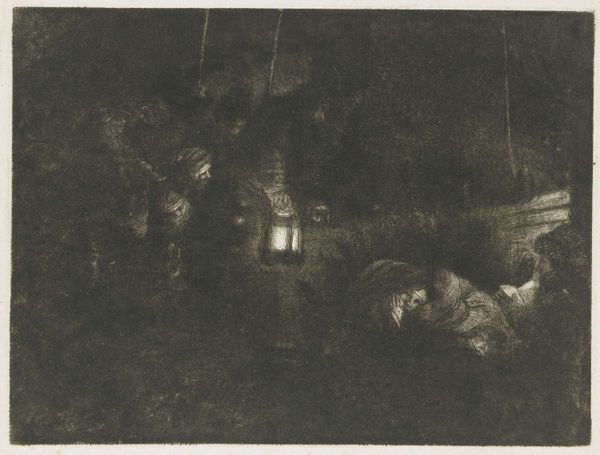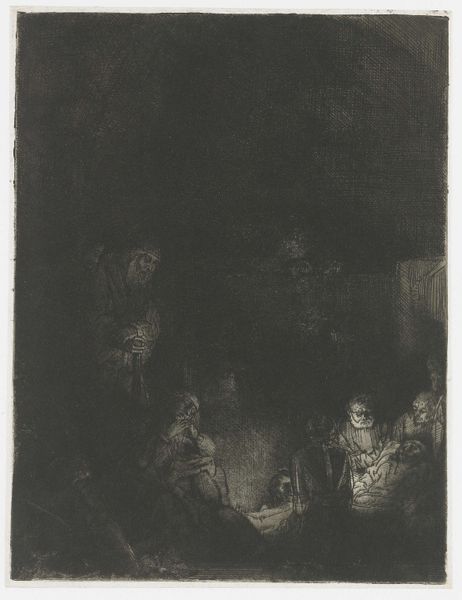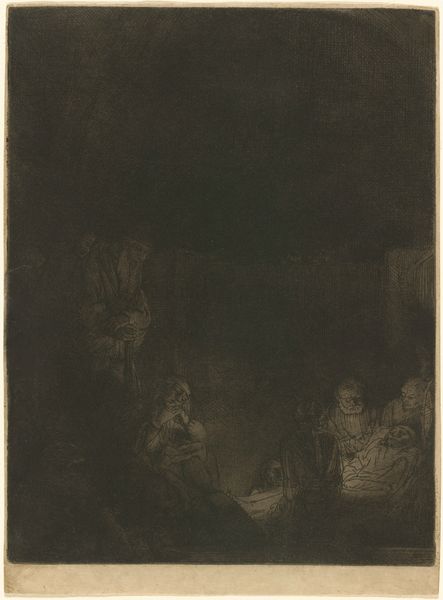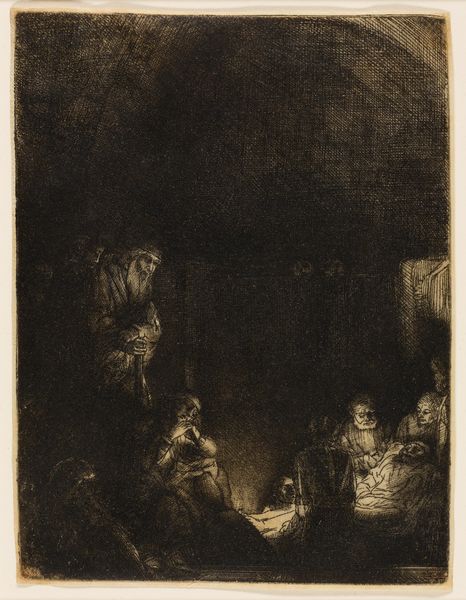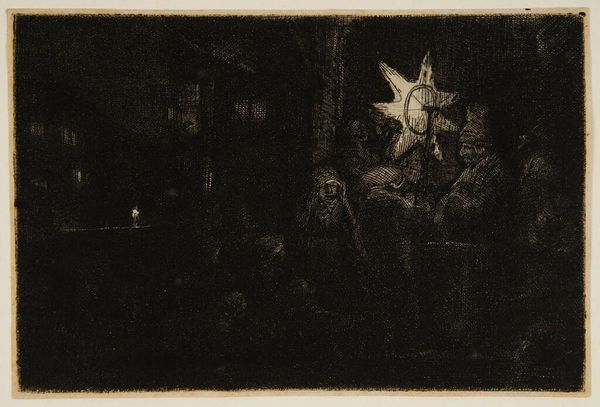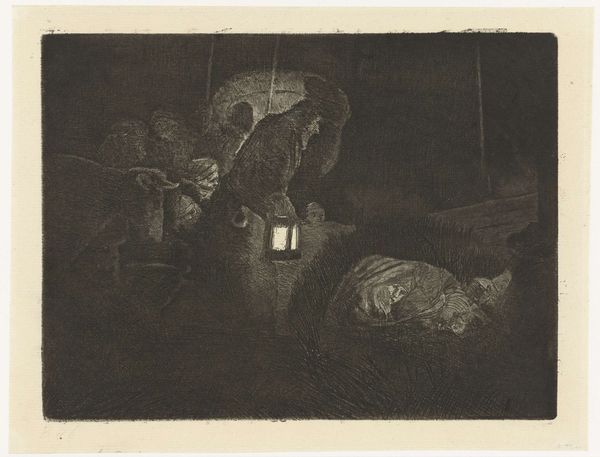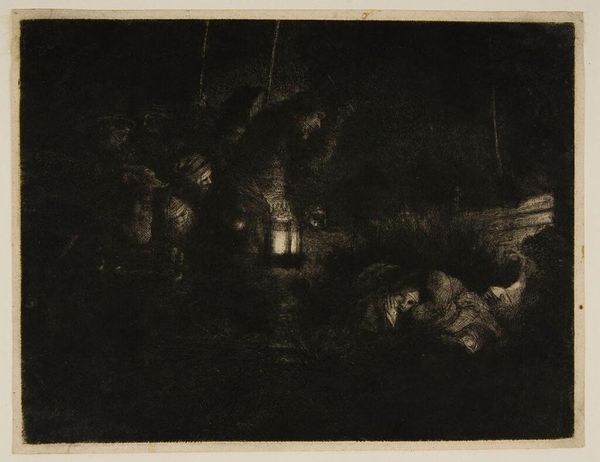
print, etching
#
narrative-art
#
baroque
# print
#
etching
#
figuration
#
chiaroscuro
#
history-painting
Dimensions: height 150 mm, width 199 mm
Copyright: Rijks Museum: Open Domain
Curator: Here we have Rembrandt van Rijn's etching, "The Adoration of the Shepherds," created around 1657, now held at the Rijksmuseum. Editor: My first impression is how intimate this print feels, despite depicting such a significant biblical event. The stark contrast between light and shadow really draws you into the quiet moment. Curator: Indeed, Rembrandt masterfully employs chiaroscuro, heightening the drama. This etching underscores a critical point for understanding art production of the era, Baroque artists sought heightened emotional connection, moving away from detached portrayals, focusing instead on captivating viewers and eliciting stronger emotive responses. Editor: I agree. The way the light from the lantern and perhaps the divine source illuminates the faces creates a strong focal point. You are immediately drawn to the Virgin, her vulnerability so human. It makes the divine accessible. Curator: And we need to consider the function of these printed images at this time. The accessibility of prints allowed for wider circulation of religious narratives. This promoted engagement with Biblical stories in a personal and immediate way, deeply impacting the visual culture. The imagery and its interpretation, as seen through the artist’s hands, reinforces the era's beliefs and moral codes. Editor: Technically, look at the line work Rembrandt achieves with etching! From the softest gradients defining the forms to the sharp lines suggesting texture and the haggard appearances, all serve a purpose. He’s not just depicting a scene, he's using light and dark to convey profound emotion. The contrast almost gives it a stage-lit effect, which heightens the narrative. Curator: Exactly, Rembrandt often placed these narratives into contemporary settings. His interpretation resonates so powerfully because of how he connected this holy event with his viewers. Editor: Thinking about the emotional response I initially had, analyzing these technical and historical aspects only adds depth to that feeling. Curator: Absolutely, considering the cultural context enriches our understanding and helps to re-evaluate how artworks are used. It also forces us to understand and be critical of our expectations when we visit such an important site. Editor: I can leave this artwork today with a much deeper insight after learning of the nuances in visual and conceptual techniques and historical impacts it bears.
Comments
rijksmuseum about 2 years ago
⋮
After the annunciation, the shepherds travel to Bethlehem and find Jesus with his parents in a stable. Rembrandt could not have depicted this scene any darker or stiller. The lantern of the arriving shepherds casts light on the Virgin, who has fallen asleep. Joseph sits reading by his own lamplight and looks up in surprise.
Join the conversation
Join millions of artists and users on Artera today and experience the ultimate creative platform.
rijksmuseum about 2 years ago
⋮
The adoration of the shepherds has often been depicted in graphic art. Rembrandt’s version is exceptional for the extreme rendering of the nocturnal gloom in the stable. To achieve this velvety darkness, he successively reduced the light in subsequent states. In this impression, he intensified the shadow around Joseph, so that only his book and the faces of Mary and the Christ Child are still illuminated.
